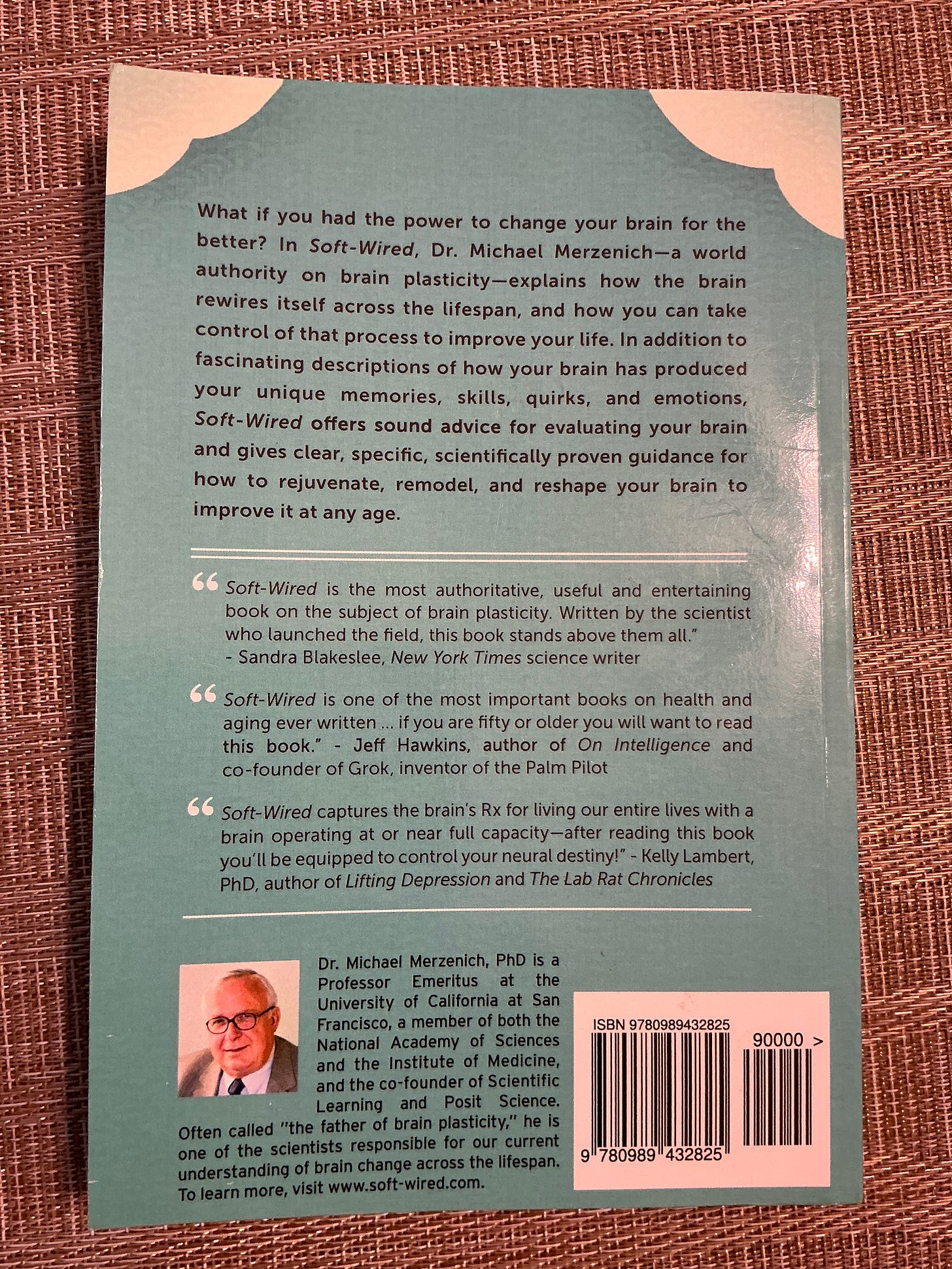Book Review: “Soft-Wired: How the New Science of Brain Plasticity Can Change Your Life” by Dr. Micheal Merzenich PHD
If we went for a coffee today at some point we would talk about neuroplasticity because it’s been such a large part of my family for the last five years. This book would likely come up in the conversation because I spent some money as a result!
How did I get this book?
Angie C. at church gave it to me. She knows we have a special needs child.
How she got it is very interesting. She has made a habit of frequenting thrift stores and uses an app on her phone to scan the barcodes of books to see which ones have value beyond what they are selling for in the thrift stores. She buys them and then sells them online at a marginal profit. She came across this book in a thrift store, it wasn’t worth reselling, but thought that I might be interested in it, and so she gave it to me.
What is it about?
Dr. Merzenich has had an exciting career in the field of neuroscience. This is a popular level book that he wrote about 10 years ago as he was retiring.
According to the bio on the book, he’s been called “the father of brain plasticity.”
The book is divided into five parts:
Part 1 - Your Brain is a work in progress (it dispels myths about learning and brain training and his personal story of discovery of the plasticity of our brains)
Part 2 - Brain Plasticity throughout life (this charts the development of the brain in childhood and into late adulthood and what can be expected along the way)
Part 3 - Creating “you” (five chapters discussing how incredibly unique each person is, relating it to a universe within, and describing a day in the life of your brain)
Part 4 - The Brain in Retreat (9 chapters of threats to brain health, vitality and function, it’s helpful to identify what is not helping!)
Part 5 - Strengthening, correction, and rejuvenation through brain training (10 chapters of ways to improve brain functioning)
What did I think of it?
This is a fantastic introduction to the world of neuroplasticity at the popular level.
Full disclosure, I didn’t read the whole book. Here’s how it went down. My daughter for some still unexplained reason, got up around 2:3am, got dressed, made her bed, and after multiple attempts to get her back to bed, it was obvious that she was just going to be up. So, while she was working on a puzzle or something, I grabbed this book and ransacked it.
I got the idea of ransacking from “Reading on the Run” in the Clinton Leadership Resources sent to me by my friend Trip Kimball.
The book is 10 years old, I didn’t need to read the whole thing, I needed to get his ideas from the last section on how to improve brain functioning, repairing, and recovering from injury.
The big takeaway from this was signing my daughter up for his brain training called “Brain HQ.” They have an app for the iPad that was intuitive for her and she spent several hours on it. She’s since moved on to other things, and I haven’t made a point of pursing it and following up on it because we are experimenting with the Interx device to see if it can help reduce the monthly cluster of seizures.
Maybe I should take over her “Brain HQ” account?
Conclusion:
Neuroplasticity is still a new frontier with much to give anyone paying attention a better quality of life no matter what age. It’s truly marvelous the design that God created in the human being. We really haven’t explored it.
Also… the classical method of education fits like a hand in a glove with what we are learning about neuroplasticity…





